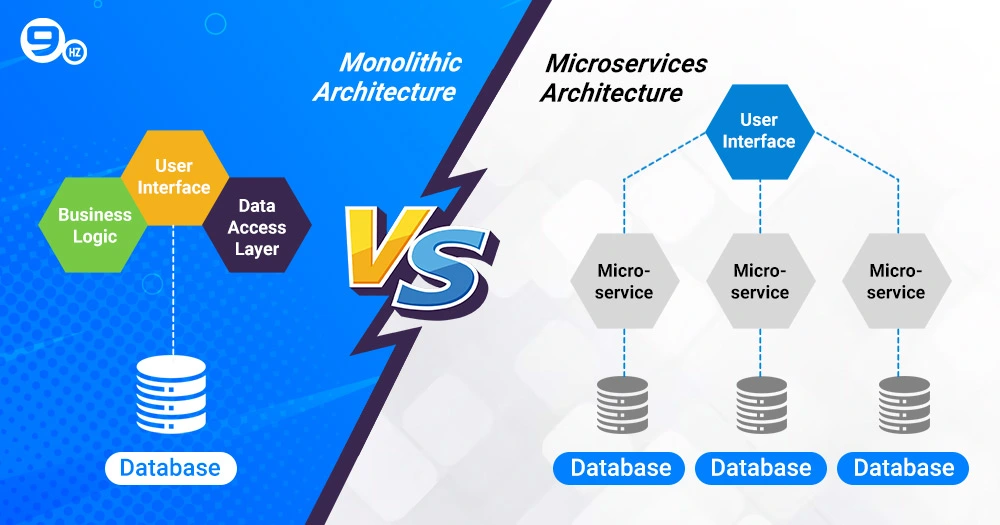Software is the alchemy that powers modern businesses across industries. And building the right software solution—particularly while deciding between onshore vs offshore software development—goes beyond just code. It’s about mindset, collaboration, and picking a model that fits your vision.
Technology is evolving at a breakneck pace. To keep ahead of the curve, companies are building high-quality software that brings growth, innovation, and value. The real question is if you should go local or make the most of the global expertise! If you are weighing the advantages and setbacks of onshore vs offshore software development, you’re not alone!
Statista (2024) says that in the last five years, approximately 60% of US businesses have hired other organizations to conduct software development work for them. By 2027, the US offshore software development industry is expected to be worth an incredible $109.2 billion. This is because costs are going down and skills are becoming more specialized.
To make the right choice for your business and take advantage of this trend, you need to learn the facts. Keep reading to ace the deal!
What is Onshore Software Development?
Onshore software development is when you engage a team of developers who live and work in your own country. These experts normally work, live, and do business in the same culture, time zone, and business environments as you.
Using a common language makes it easier for individuals to work together and with real-time collaboration. Furthermore, it offers smoother alignment with regulatory compliance and local business practices and better integration with in-house teams.
Key Characteristics of Onshore Development
- Same Country Operations: All communication, collaboration, and in-person meetings take place within your country.
- Cultural Alignment: The risks of misunderstandings dwindle as your development professionals share your business etiquette, cultural norms, and work habits.
- Ease of Communication: There are no linguistic barriers, thanks to instant feedback and real-time collaboration!
- Legal Compliance: Simplified intellectual rights protection and regulatory alignment with local laws and regulations.
When Do Businesses Opt for Onshore?
- Highly Regulated Projects: Projects that deal with sensitive information, need to protect intellectual property, or work in fields like banking or healthcare have to follow tight guidelines.
- Complex Communication Needs: It’s hard to talk and see each other all the time.
- Rapid Iteration: Agile projects that need modifications, feedback, or work together right now.
Example Scenario –
A health tech business in California might pick a software development partner in San Francisco to make sure they follow HIPAA rules and make it easier for product managers to work together in real time.
What is Offshore Software Development?
This model focuses on hiring an offshore software development company in a different country that’s often chosen for its broader global talent pool and lower labor costs.
An offshore software development company refers to a third-party vendor abroad that specializes in delivering solutions for clientele globally. Regions such as Eastern Europe, Southeast Asia, Latin America, and India are the most popular choices for US organizations.
Key Characteristics of Offshore Development
- Different Country, Lower Cost: Hiring professionals from countries like India and Ukraine, where wages are lower, can save you a lot of money.
- Global Talent Pool: You can locate professionals who have the technologies, techniques, skills, and development models for making software that you can’t get where you reside.
- Scalability: You can make your offshore development team bigger or smaller as your business needs evolve.
- Time Zone Differences: “Follow the sun” means that teams work all the time, or you can schedule meetings to deal with the variances in time zones.
When Do Companies Lean Towards Offshore?
- Cost-Sensitive Projects: Small enterprises or new businesses that wish to spend less on development so they may get the most out of their money.
- Access to Specialized Skills: Projects that need people who are experts in AI, blockchain, or other innovative technologies.
- Large-Scale Projects: Enterprises that want to hire experts from all around the world to quickly build complicated products with a lot of features.
Example Use Cases for Offshore Software Development
A large online company in New York hires a crew in India to construct a mobile shopping site. This offshore development team helps cut their development expenses by up to 60% and makes it easier for businesses to find skilled offshore developers from other countries.
Build Smarter, Scale Faster With Our Offshore Software Experts
Onshore vs Offshore Software Development: Key Differences
Before you take the plunge, it’s important to learn what differs between the onshore from offshore software development models. Each model has its pros and cons when it comes to finances, flexibility, legal monitoring, and cultural compatibility. These variations have a direct impact on the overall success of your project, from schedules to cost-effectiveness and compliance risk.
Onshore vs Offshore Software Development: Comparison Table
| Key Factor | Onshore (US) | Offshore (Asia/Eastern Europe) |
|---|---|---|
| Average Hourly Rate | Approx. $80 – $150/hr. (industry benchmarks, 2025) | $25 – $60/hr. (industry benchmarks, 2025) |
| Talent Pool | Local, limited by geography | Global access to wider and specialized expertise |
| Communication | Real-time, in-person possible | Requires strong documentation and robust collaboration tools |
| Time Zone | Same as business hours; minimal delays | Different zones may enable a 24/7 development cycle |
| Cultural Alignment | High; easier language and business culture | Needs adjustment, but top vendors always invest in cultural training |
| Compliance & IP | Easier to monitor locally | Needs vendor certifications (e.g., ISO, GDPR) |
Talent Pool Availability
Onshore outsourcing limits you to your own country’s market, but offshore outsourcing provides you with access to a broader talent pool with different tech expertise.
Pro Tip – If your software project needs uncommon capabilities, offshore software development services can help you get them faster and at a lower cost.
Communication & Collaboration
Working Together in Real Time vs. Scheduling Problems
- Onshore: real-time discussions, quick responses, and even in-person meetings.
- Offshore: Needs clear documentation, better use of project management tools, and effective communication strategies.
Time Zone & Location
Onshore means being in the same time zone as your business. Offshore development may need a flexible schedule, but it lets you “follow the sun” to progress for faster turnarounds.
Pro Tip: Set work hours that overlap to make it easier to communicate to each other and speed up the process.
Cultural & Language Alignment
- Onshore means better cultural alignment and fewer linguistic barriers.
- Offshore means paying attention to language and cultural differences, yet most leading vendors invest more in training for successful projects.
Legal & Compliance Considerations
- Onshore: It’s easier to keep a close tab on both regulatory compliance and intellectual property.
- Offshore: It’s important to engage with organizations that are certified in ISO, GDPR, and SOC2 to make sure of legal compliance while also protecting your interests.
Cut Costs, Not Quality — Hire Offshore Software Developers Now.
Pros and Cons of Onshore Software Development
| Advantages | Disadvantages |
|---|---|
| Seamless communication and real-time collaboration | Higher costs and management expenses |
| Strong cultural alignment and fewer language barriers | Limited local talent pool |
| Legal compliance with local laws and regulations | Might lack access to some specialized expertise |
| In-person meetings and close team integration are possible | Lack of scalability for rapid team expansion |
Strengths of Onshore Software Development
- Easy Communication: Work together in real time, meet in person, and resolve problems quickly. This makes it easy to make decisions fast and work on tasks every day.
- Cultural Alignment: There is less risk of misunderstandings when everyone involved in a business is on the same page. Teams also blend in better with how your company works and its internal culture.
- Legal Compliance: It’s easier to obey the rules and protect your ideas. This brings down the risks of legal complications and helps maintain contracts and agreements with transparency. Also know about Offshore vs Nearshore
Setbacks of Onshore Software Development
- Higher Costs: Be ready to pay more for development and project management. For large-scale or long-term projects, these costs can really mount up to the total budget.
- Limited Talent Pool: Difficult to find niche skills or scale quickly if your local market is saturated. This makes it take longer to hire staff and get things going.
- Lack of Flexibility: Onshore teams would not be able to grow or save more as easily as their offshore counterparts. If the project’s scope changes quickly, it may take longer and cost more to make the adjustments in the area.
Pros and Cons of Offshore Software Development
| Advantages | Disadvantages |
|---|---|
| Significant cost savings and cost efficiency | Communication challenges and time zone gaps |
| Access to a vast global talent pool | Potential data security and legal risks |
| Flexibility and scalability for large projects | Cultural and language differences |
| Offshore software development companies specialize in niche skills | Limited in-person meetings and less direct oversight |
Advantages of Offshore Software Development
- Cost Efficiency: You can save a lot of money on managing and developing projects. This helps businesses allocate additional budget toward marketing or improving their product features.
- Global Talent Pool: Hire specialized skills unavailable locally. Hire experts that have skills that aren’t common in your location. You may hire developers who know how to use emerging technologies like AI, blockchain, and AR/VR.
- Scalability: You may easily modify the size of your offshore development team to meet the project’s evolving needs and level of complexity. This flexibility benefits businesses facing tight deadlines or fluctuating workloads.
Disadvantages of Offshore Software Development
- Communication Issues: Feedback can take longer due to language barriers and time zone differences. This usually means that you need to keep more detailed records and check in with each other more often to stay aligned.
- Security Concerns: It’s important to be more diligent while protecting intellectual property and following the law. Working across countries could also come up with varied interpretations of data privacy laws.
- Less Direct Oversight: It’s harder to monitor or manage teams from a distance and make sure that quality assurance processes are functioning effectively. This can slow down the sprint if you don’t use the proper tools to keep track of your daily progress.
Scale Your Projects Seamlessly With Our Offshore Development Team.
Onshore vs Offshore Software Development Cost
Regional Cost Comparison: North America, Europe, and Asia
Development costs are one of the most important deciding factors for any business. In North America, notably in the US and Canada, professional developers normally charge between $120 and $200 an hour to work on an onshore software development project. In Western Europe, such as the UK, Germany, or France, the average cost is between $80 and $150 per hour.
In contrast, offshore software development companies in India, Vietnam, Ukraine, or the Philippines can hire highly skilled experts for as little as $20 to $50 per hour. Eastern Europe (Poland, Romania) is usually in the middle range, between $40 and $80 per hour. This strikes a perfect balance between price and quality.
| Region | Onshore Rate (USD/hr) | Offshore Rate (USD/hr) |
|---|---|---|
| North America | $120 – $200 | $25 – $60 (Asia/EE) |
| Western Europe | $80 – $150 | $30 – $70 (Asia/EE) |
| Eastern Europe | $40 – $80 | $30 – $70 (Asia) |
| Asia (India, VN) | $20 – $50 (Onshore) | $15 – $40 (Offshore) |
| Australia/NZ | $90 – $150 | $25 – $55 (Asia) |
Factors Affecting Offshore Software Development Cost
The cost of software development mainly depends on more than just geography –
- Level of Expertise: Senior developers or architects charge more than junior or mid-level developers.
- How Complex the Project Is: Projects that are big, complicated, or have a lot of rules cost more, no matter where they are.
- Technology Stack: Using cutting-edge technologies like AI/ML, blockchain, and AR/VR may cost more because not as many professionals know how to use them.
- Scope & Timeline: Building anything with a lot of features or a short deadline could cost more, no matter where it is built.
- Hidden Costs: For offshore development, budget for additional project management, time zone adjustments, communication tools, and, sometime even flights.
Pro Tip: Talk to your chosen partner about the project and how much it may cost so you don’t go over your budget.
Why Businesses Prefer Offshore Software Development Services with The NineHertz?
With innovation in our DNA and an aim to make an impact that matters, The NineHertz has empowered clients for decades and promoted their long-term growth.
Expertise in Offshore Software Development
Being a globally recognized offshore software development company, we’re certified in ISO 9001:2015, GDPR, and SOC2 compliance, and trusted by US and international clients. Some of our specializations include end-to-end product development, custom software development, mobile and web applications.
Dedicated Offshore Development Teams
Clients choose The NineHertz because of its –
- Custom Engagement Models: This lets them adjust contracts to meet their needs – whether they need full teams or a single expert.
- Proven Track Record: More than 1000 successful projects in the USA, UK, Europe, and Asia.
- Robust Quality Assurance: Fully dedicated QA engineers and strict compliance standards at each step.
Trust and Social Proof
The NineHertz is a trusted name in offshore outsourcing. It has a 4.9/5 rating on Clutch and has been featured in Forbes. GoodFirms (2025) stated they were the best in terms of quality, compliance, and client success.
Conclusion on Onshore vs Offshore Software Development
The debate around onshore vs offshore software development won’t ever stop! So don’t rush the decision-making process. You can save a lot and hire global talent with offshore software development, but onshore software development ensures better communication, compliance, and cultural fit. Think about your goals, budget, schedule, and project complexity.
Pro Tip: Evaluate your partner—whether offshore or onshore—by starting with a pilot or exploration phase. Think about whether your project actually needs in-person collaboration or if a structured offshore model can deliver with efficiency.
Still confused? If things like cost savings, 24/7 productivity, flexibility, and access to elite global talent top your priority, you may choose offshore over onshore. And, for trusted, low-cost offshore software development services, trust The NineHertz. Because we don’t just talk—we act!
FAQs: Onshore vs Offshore Software Development
1. What is the difference between onshore and offshore software development?
Onshore software development is when you work with a team in your own country to share a culture, language, and legal environment. Offshore software development leverages teams from other countries, usually for cost savings and to save money and get access to a wider range of skilled workers.
2. Which is more cost-effective: onshore or offshore software development?
Offshore software development is usually cheaper because of lower labor costs and result-yielding offshore outsourcing models. But the whole cost includes management and communication. Offshoring ensures substantial cost savings – up to 60%—especially for big or long-term projects.
3. How do time zones affect offshore software development projects?
Time zone differences can slow down input, but they also power progress “around-the-clock.” Plan meetings that don’t conflict with each other and use digital tools to stay organized.
4. Is offshore software development safe for sensitive projects?
Yes, provided you hire an offshore software development company that has strict compliance certifications (GDPR, SOC2, ISO) and strong intellectual property protection.
5. What are the advantages of onshore software development?
Onshore development ensures real-time collaboration, cultural alignment, seamless legal compliance, and easy oversight.
6. Can small businesses benefit from offshore software development?
Of course! Small firms can get access to global experience and fast growth through offshore software development services, all without spending a lot of money.
7. How do I decide between onshore and offshore software development for my project?
Take factors like your project complexity, budget constraints, security, or communication needs into consideration. Also, think about whether real-time cooperation or having access to a bigger pool of expertise will help your project more.
Great Together!









